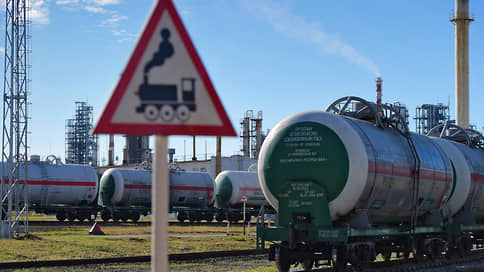Export of coal from Russia to China by sea: reasons for the fall of supplies

The shipment of energy coal from Russia to China by sea for two decades of March decreased by 49% in annual comparison. In other Asian countries, deliveries have also been reduced, but not so significant. China after sanctions has become the largest market for Russian energy coal, but now actively supports its own prey. Other countries of the region will not be able to replace Chinese volumes of consumption.
The shipment of energy coal from Russia to China by sea for two decades of March fell by 49% of the year, follows from KPLER data, which Kommersant familiarized with. During this period, the Russian Federation on average weekly shipped in China by sea transport 251 thousand tons against 534 thousand a year earlier. In other countries of the Asia-Pacific region (APR), weekly sea supplies in March decreased by about 6% of the year, to 614 thousand tons, but a month grew by a month.
Due to sanctions against Russian coal miners, China in the last years has become the largest market for Russian energy coal. China consumes about 5 billion tons of coal, but only 5% of needs covers it due to imports. Given the scale of the Chinese coal industry, the demand for imported coal can be adjusted depending on the growth rate of the country’s economic activity. Coal mining in China is quite expensive, and a protectionist policy is valid for the support of manufacturers today, says Maria Kolomets, director of corporate ratings of the expert RA agency. An additional pressure factor was low consumer activity and high warehouses in Chinese ports, the NEFT Research partner in consulting Alexander Kotov continues.
According to the International Energy Agency (IEA), although coal remains the world’s largest source of electricity generation, its share in the total production of 35% became the lowest since 1974 due to the growth of production from other sources – revengeations, nuclear power plants. In Russia, according to the accumulation of electric power facilities, by 2042, the share of coal for the total needs of fuel software should be reduced to 20.5% from 23.4% in 2025.
In addition to China, other countries of the Asia-Pacific region are actively developing coal generation, says Boris Boris Krasnozhenov, head of the analytics department for the securities market of Alfa-Bank. “So Vietnam, Malaysia and Sri Lanka have significant potential in terms of importing Russian coal,” he says. India also remains a significant importer of energy and coking coal, increasing the volume of coal generation and steel smelting. By 2030, the export of energy coal from Russia to India can grow up to 40 million tons, the analyst predicts.
According to KPLER, since the beginning of this year, Russian coal miners shipped 5.8 million tons of coal by sea by sea, of which 36% were 36% for China, 25% for India, 19%-in South Korea, 4-6% to Taiwan, Malaysia, Sri Lanka and Vietnam, 1% for Indonesia.
The capacity of the Chinese market is too large to be fully compensated by other countries in the current conditions, says Yevgeny Grachev, director of the Center for Price Indexes (CCI). In addition, in the developing markets of Southeast Asia prefer generation on cheaper low-calorie coals. At current prices and course, recording a long transport shoulder for such coals will be difficult, he explains. However, the competitiveness of Russian coal in these markets is facilitated by the relative stability of supplies, and in Australia and Indonesia, natural and climatic conditions, including periodic floods, can negatively affect the extraction and export, says Nariman Tayketaev, the director of the NRC agency. In addition, he adds, the average cost of coal mining in Russia, without taking into account transportation costs, remains lower than other coal mining countries.
According to Boris Krasnozhenov, a long transport shoulder and problems with the throughput of the railway infrastructure eastward are objective disadvantages of the Russian coal industry in terms of export. The situation is complicated by the fact that coal prices are now at minimums over the past four years. Thus, the export price of energy coal with calorie content of 5500 kcal Basis CFR China, according to the CCC, is at the level of $ 75–76 per ton. According to experts, up to 50% of Russian energy coal manufacturers in the results of 2024 are unprofitable (see Kommersant on January 20).
Russian coal miners will have to compete with the ATR markets with American suppliers, adds Alexander Kotov. “Last week, US exporters increased 12% of the supply of energy coal to Japan, India and other countries of the region. But Russian coal miners can still count on strengthening trade wars between China and the United States, as well as an increase in the cost of low -quality Indonesian coal against the background of the country’s government’s plans to increase coal mining, ”the expert said.








